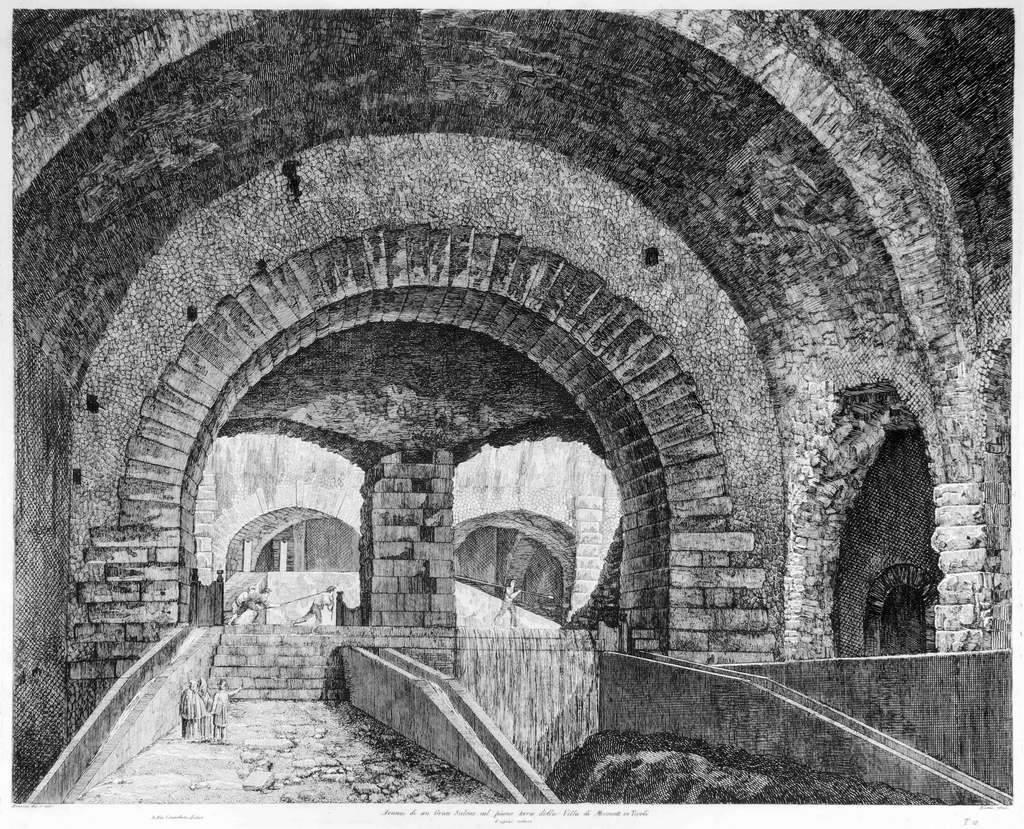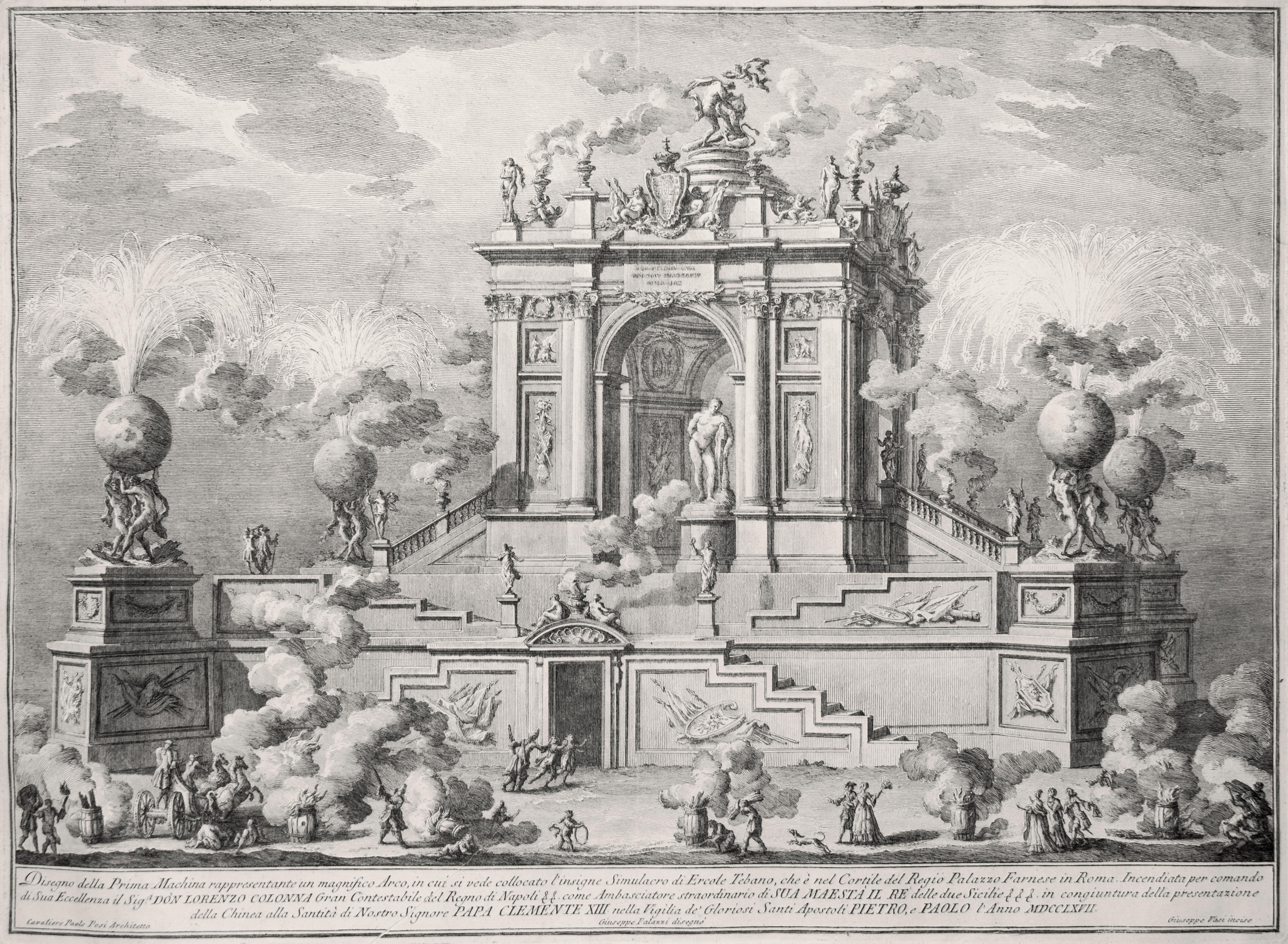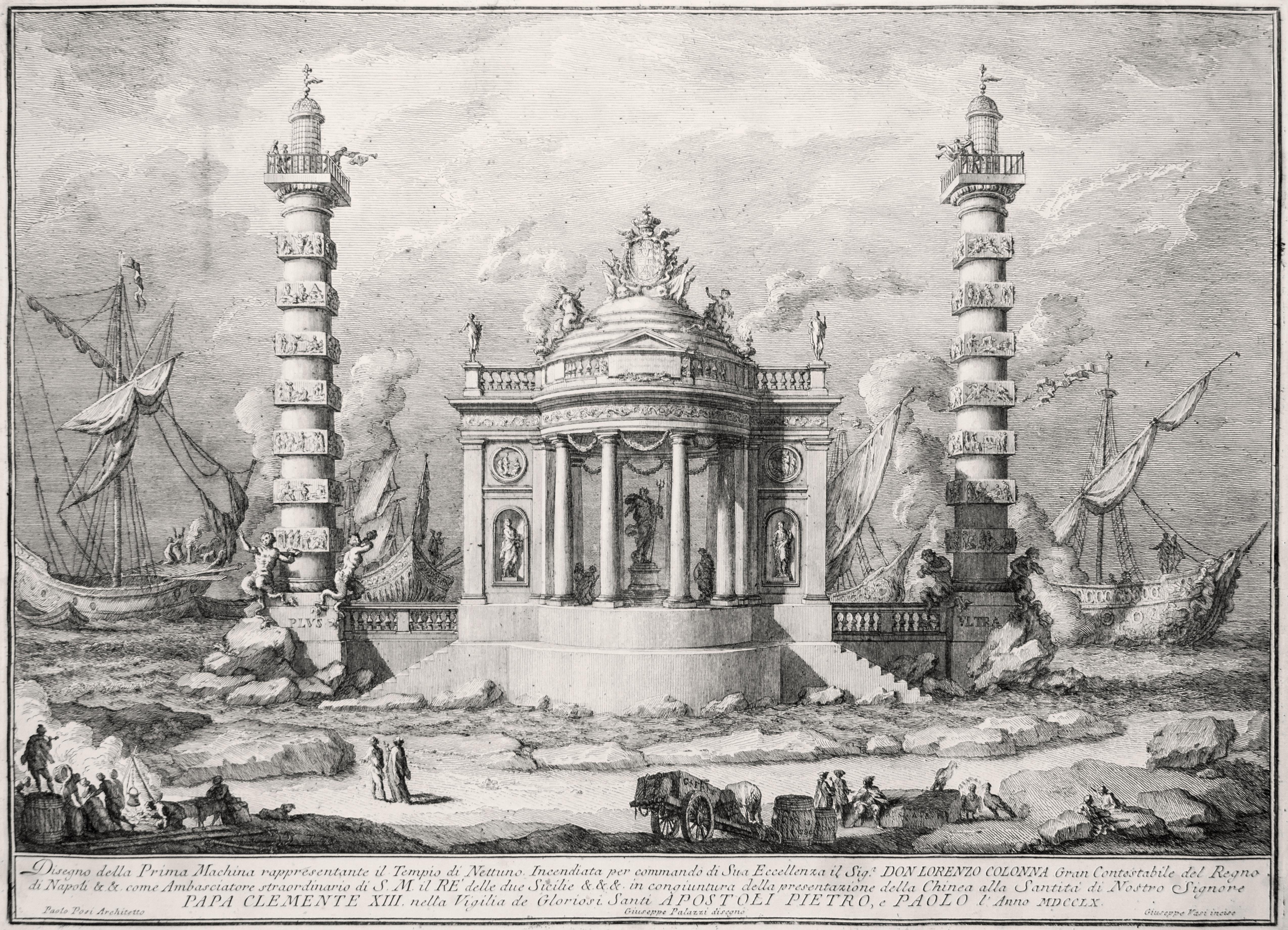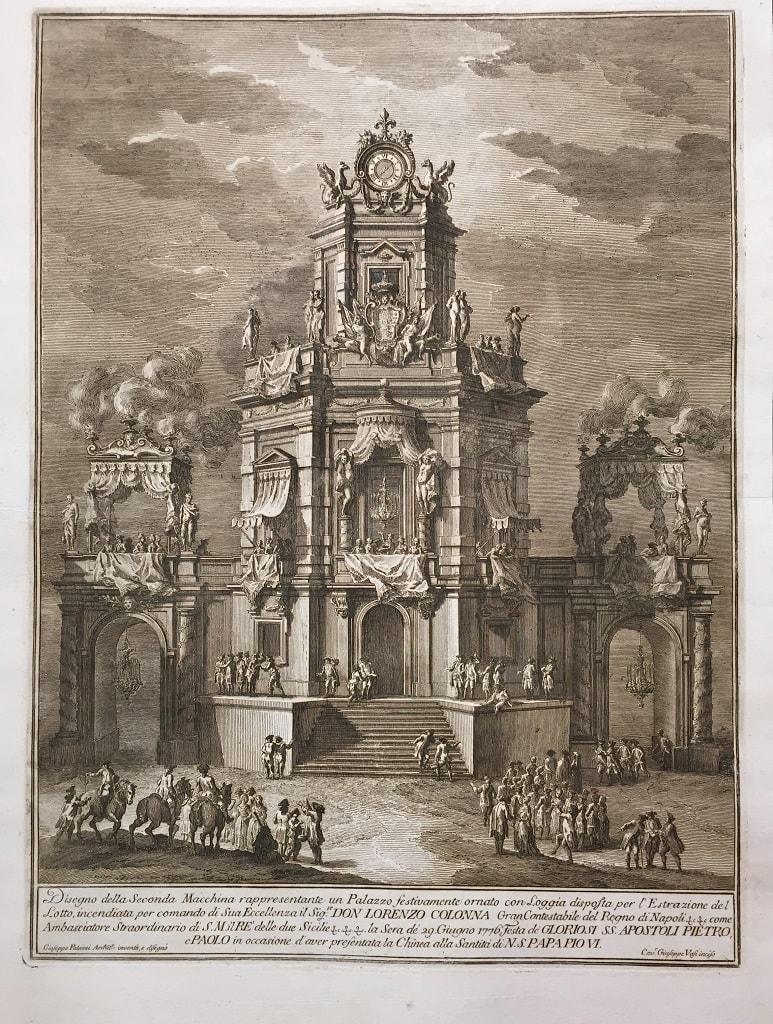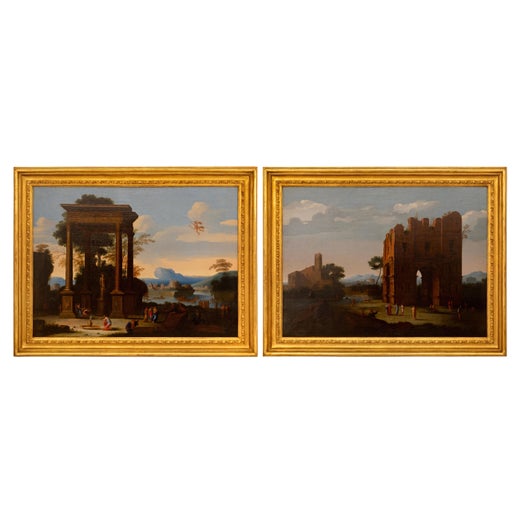Claude Lorrain17th century etching black and white figures sketch 1633
1633
About the Item
- Creator:Claude Lorrain (1604 - 1682, French)
- Creation Year:1633
- Dimensions:Height: 15.5 in (39.37 cm)Width: 17 in (43.18 cm)
- Medium:
- Movement & Style:
- Period:Mid-17th Century
- Condition:
- Gallery Location:Milwaukee, WI
- Reference Number:
Claude Lorrain
Claude Lorrain, born Claude Gellée, was a French painter, draughtsman and engraver of the Baroque era. He spent most of his life in Italy and is admired for his achievements in landscape painting. He painted a pastoral world of fields and valleys not distant from castles and towns that entered into these quiet scenes. Landscape as a subject was distinctly nontraditional and secular during this time of religious and mythical iconography, and Gellée was certainly breaking with tradition. John Constable described the artist as the most perfect landscape painter the world ever saw and declared that in Claude’s landscape, “all is lovely, all amiable, all is amenity and repose; the calm sunshine of the heart." He passed away on November 23, 1682.
- ShippingRetrieving quote...Ships From: Milwaukee, WI
- Return PolicyA return for this item may be initiated within 14 days of delivery.
- 17th century etching black and white figures sceneBy Cornelis BegaLocated in Milwaukee, WI"The Singer" is an original etching by Cornelis-Pietersz Bega. It depicts a performer and onlookers. Publisher: Pearce #50. 4" x 3" art 16 1/2" x 13 1/2" frame Cornelis Pietersz Be...Category
Mid-17th Century Old Masters Figurative Prints
MaterialsEtching
- 17th century etching black and white indoor dramatic figures sceneBy Cornelis BegaLocated in Milwaukee, WI"The Meeting" is an original etching by Cornelis-Pietersz Bega. It depicts a confrontation between two groups of figures. Publisher: Pearce #48. 2 3/4" x 2 3/4" art 10 1/4" x 10 3/8...Category
Mid-17th Century Old Masters Figurative Prints
MaterialsEtching
- Four original etchings of women from 'Aula Veneris' series by Wenceslaus HollarBy Wenceslaus HollarLocated in Milwaukee, WIPresented here as a group are four original etchings of women in European national dress from the master printmaker Wenceslaus Hollar's series "Aula V...Category
17th Century Old Masters Figurative Prints
MaterialsPaper, Etching
- 17th century etching black and white dramatic window figure sceneBy Cornelis BegaLocated in Milwaukee, WI"Man Looking Through a Window" is an original etching by Cornelis-Pietersz Bega. It depicts a figure leaning through a window. Publisher: Pearce #37. 3 1/8" x 3" art 14 3/4" x 13 1/...Category
Mid-17th Century Old Masters Figurative Prints
MaterialsEtching
- 18th century triptych etching figurative prints small black and white expressiveBy Francois VivaresLocated in Milwaukee, WIFrançois Vivares was known to have produced several copies of images after older masters, such as, in this case, Rembrandt van Rijn. In this set, Vivares reproduces "The Quacksalver" (1635, Bartsch 129), "Beggar man and beggar woman conversing" (1630, Bartsch 164), and "Beggar Seated Warming...Category
1760s Old Masters Figurative Prints
MaterialsEtching
- 17th century etching black and white figurative character print expressiveBy Jan Gillisz van VlietLocated in Milwaukee, WIJan Gillisz van Vliet (1605–1668) was a Dutch Golden Age artist and student of Rembrandt. He worked with Rembrandt between 1628 and 1637, inspired by his master's work. Like Rembrandt, van Vliet made a series of beggar figures, though often with a greater degree of satire and expressiveness. For example, this image of a rat catcher...Category
1630s Old Masters Figurative Prints
MaterialsEtching
- Antiche urne cinerarie e lampadeBy Giovanni Battista PiranesiLocated in Roma, ITFrom the Piranesi's series “Vasi, candelabri, cippi, sarcofagi, tripodi, lucerne, ed ornamenti antichi disegnati ed incisi dal cav. Gio. Batt. Piranesi pubblicati l’anno MDCCLXXIIX” (1778). Antiche urne cinerarie e lampade" is an artist proof, printed on contemporary laid paper, large margins, representing antique marble cinerary urns - “found into antique graves...Category
1770s Old Masters Figurative Prints
MaterialsEtching
- Avanzi di un Gran Salone nel piano terra della Villa di Mecenate in TivoliBy Luigi RossiniLocated in Roma, ITLike G.B.Piranesi, Rossini, well know as the “Piranesi’s heir”, trained as an architect and his etchings have the same tendency to emphasize the massive structure of the Ancient Rome...Category
1820s Old Masters Figurative Prints
MaterialsEtching
- Magnifico Arco con il Simulacro di Ercole Tebano - by Giuseppe Vasi - 1767By Giuseppe VasiLocated in Roma, ITEnglish Title: "Magnificent Arc with the Ercole Tebano’s Simulacrum” Image dimensions: 39.9x54.6 cm. Beautiful Proof, showing the apparatus for firework built by the “Cavaliere Pa...Category
1760s Old Masters Landscape Prints
MaterialsEtching
- Il tempio di Nettuno - Etching by Giuseppe Vasi - 1760By Giuseppe VasiLocated in Roma, ITEnglish Title: "The Temple of Neptune” Image dimensions: 38.3x53.2 cm. Very Fine Proof, showing an architectural apparatus for firework built by Paolo Posi in occasion of the Chinea Feast in 1760. Signed on plate lower-right margin. Original Title with a detailed capture under the picture. In Good condition, with a light abrasion higher-left corner and some little foxing in margins. Ref: G. Sassoli, Apparati architettonici per fuochi d'artificio, 1994, p. 137, n. 69 Master of Giovan Battista Piranesi...Category
1760s Old Masters Landscape Prints
MaterialsEtching
- Edificio con Loggiato per l'estrazione del Lotto - by Giuseppe Vasi - 1776By Giuseppe VasiLocated in Roma, ITImage dimensions: 51x38.4 cm. Beautiful Artist's Proof, representing the apparatus for firework built in occasion of the Feast of S. Peter and Paolo (29th June 1776) by Paolo Posi. ...Category
1770s Old Masters Landscape Prints
MaterialsEtching
- Nobil'Edifizio a diporto in Luogo di Delizia - Etching by Giuseppe Vasi - 1776By Giuseppe VasiLocated in Roma, ITEnglish Title: "Noble Pleasant Building" Beautiful Proof, showing the apparatus for firework designed and built in occasion of the Feast of S. Peter and Paolo (1776) by Giuseppe Pal...Category
1770s Old Masters Landscape Prints
MaterialsEtching

